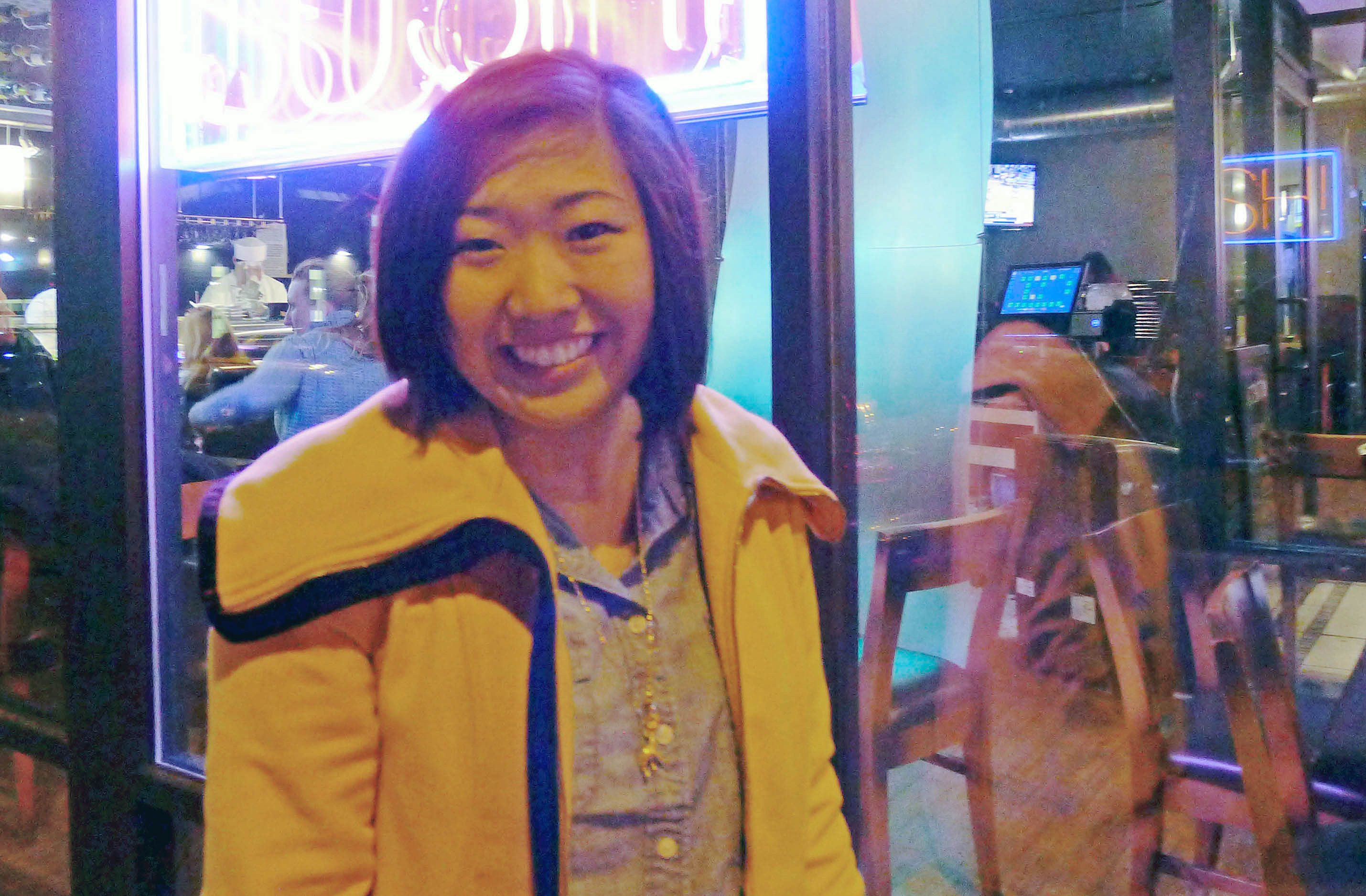Accurate Portrayals: Challenging Stereotypes In Asian And Asian American Media Representation

Table of Contents
The Perpetuation of Harmful Stereotypes
For too long, Asian and Asian American communities have been subjected to a limited and often offensive range of representations in media. These stereotypes not only misrepresent the diversity within these communities but also perpetuate harmful biases and discrimination.
The Model Minority Myth
The "model minority" myth paints a picture of all Asians and Asian Americans as inherently hardworking, intelligent, and docile, excelling academically and professionally without facing hardship. This is a dangerous oversimplification.
- Examples in media: The overrepresentation of Asian characters in STEM fields without acknowledging the struggles faced by many, or the absence of characters grappling with mental health issues.
- Consequences: Individuals who don't fit this idealized image face immense pressure and feel like failures, while the myth masks systemic inequalities faced by many within the community.
- Impact on inter-ethnic relations: This stereotype pits Asian Americans against other minority groups, fostering division and hindering solidarity against systemic racism.
The Perpetual Foreigner
Another prevalent stereotype is the "perpetual foreigner," depicting Asians and Asian Americans as perpetual outsiders, regardless of their citizenship status or how long they've lived in the country.
- Examples in film and television: Characters with heavily accented English, even those born and raised in the country, or those constantly questioned about their origins.
- Impact on social integration: This stereotype hinders social integration and perpetuates feelings of otherness and alienation.
- Erasure of cultural contributions: It minimizes the significant contributions Asian and Asian Americans have made to society, often erasing their history and cultural heritage.
Hypersexualization and Fetishization
Asian women are frequently hypersexualized and fetishized in media, while Asian men are often portrayed as asexual or effeminate. This harmful portrayal reduces individuals to objects of sexual desire, ignoring their complexity and humanity.
- Specific examples from media: The use of stereotypical tropes like the "dragon lady" or the "submissive geisha" for women, and the "emasculated" or "nerdy" portrayal of men.
- Objectification: This objectification perpetuates harmful stereotypes and contributes to real-world instances of sexual harassment and violence.
- Consequences for mental health and self-perception: The constant exposure to these stereotypes can negatively impact the mental health and self-perception of Asian and Asian American individuals.
The Importance of Authentic Representation
Moving beyond harmful stereotypes requires a fundamental shift in how Asian and Asian American communities are portrayed in media. Authentic representation is not just about inclusion; it’s about accurately reflecting the diverse experiences and perspectives within these communities.
Showcasing Diversity
The Asian and Asian American experience is incredibly diverse. Accurate portrayals must reflect this diversity in ethnicity, nationality, socioeconomic status, sexual orientation, and religious beliefs.
- Examples of successful inclusive casting: Films and shows that cast a wide range of Asian and Asian American actors, representing various ethnicities and backgrounds.
- Need for diverse writers and directors: Having writers and directors from diverse backgrounds is crucial for creating authentic and nuanced storylines.
- Importance of complex characters: Moving beyond one-dimensional stereotypes and creating characters with depth, flaws, and relatable struggles.
Amplifying Authentic Voices
Centering Asian and Asian American voices in the creative process is paramount. Their lived experiences and perspectives are essential for creating truly authentic storytelling.
- Impact of having Asian and Asian American writers, directors, and producers: Their presence ensures that stories are told from an authentic perspective, avoiding stereotypes and cultural appropriation.
- Value of authentic storytelling: Authentic stories resonate more deeply with audiences, fostering empathy and understanding.
- Avoiding cultural appropriation: Respecting cultural nuances and avoiding the exploitation or misrepresentation of cultural elements.
Beyond Representation: Addressing Systemic Issues
Media has a responsibility to go beyond mere representation and address the systemic issues impacting Asian and Asian American communities, such as racism, discrimination, and historical injustices.
- Examples of films/shows that tackle these issues effectively: Productions that explore the complexities of the Asian American experience in relation to systemic racism and discrimination.
- Showcasing nuanced experiences: Stories that reveal the multifaceted challenges and triumphs of Asian and Asian American individuals.
- Advocating for social justice: Media can play a powerful role in raising awareness and advocating for social justice.
Strategies for Achieving Accurate Portrayals
Achieving accurate portrayals requires a multi-faceted approach involving industry-wide changes, consumer engagement, and ongoing advocacy.
Increased Representation Behind the Camera
Increasing the number of Asian and Asian American individuals in positions of power within the media industry is essential.
- Statistics on current representation: Highlighting the underrepresentation of Asian and Asian Americans in leadership roles within the film and television industry.
- Impact of diverse leadership: Demonstrating how diverse leadership leads to more authentic and inclusive storytelling.
- Initiatives to increase opportunities: Discussing programs and initiatives designed to increase opportunities for Asian and Asian American creators.
Promoting Diverse Storytelling
We need more stories that showcase the full spectrum of Asian and Asian American experiences, avoiding the pitfalls of limited representation.
- Examples of successful inclusive media productions: Highlighting productions that demonstrate excellent representation and diverse storytelling.
- Importance of nuanced characters and authentic narratives: Emphasizing the necessity of complex and well-developed characters.
- Supporting diverse creators: Promoting and supporting Asian and Asian American writers, directors, and producers.
Holding Media Accountable
Consumers have a crucial role to play in holding media accountable for its portrayal of Asian and Asian American communities.
- Methods for promoting media literacy: Educating consumers about media literacy and encouraging critical engagement with media representations.
- Engaging in constructive criticism: Providing constructive feedback to media companies about their portrayals of Asian and Asian American communities.
- Supporting initiatives that challenge harmful stereotypes: Supporting organizations and initiatives that are working to challenge harmful stereotypes and promote accurate representation.
Conclusion
The persistent use of harmful stereotypes in the portrayal of Asians and Asian Americans in media has a detrimental impact on individuals and communities. Accurate and nuanced representation is not merely a matter of inclusion; it's about achieving fairness, justice, and a more accurate reflection of reality. We must demand accurate portrayals, support projects that champion authentic voices, and advocate for more inclusive and diverse representations of Asians and Asian Americans in all forms of media. Demand accurate portrayals in your viewing and support initiatives working toward better Asian and Asian American media representation.

Featured Posts
-
 Jessica Simpson Back On Stage A 15 Year Hiatus Ends With A Triumphant Performance
May 11, 2025
Jessica Simpson Back On Stage A 15 Year Hiatus Ends With A Triumphant Performance
May 11, 2025 -
 Sorteo Campeonato Uruguayo Segunda Division 2025 Todo Lo Que Necesitas Saber
May 11, 2025
Sorteo Campeonato Uruguayo Segunda Division 2025 Todo Lo Que Necesitas Saber
May 11, 2025 -
 Is Apple Secretly Helping Google A Deep Dive
May 11, 2025
Is Apple Secretly Helping Google A Deep Dive
May 11, 2025 -
 Walmarts 29 Jessica Simpson Kimono Cardigan A Bestselling Find
May 11, 2025
Walmarts 29 Jessica Simpson Kimono Cardigan A Bestselling Find
May 11, 2025 -
 Ataque De Avestruz A Boris Johnson En Texas Detalles Del Incidente Familiar
May 11, 2025
Ataque De Avestruz A Boris Johnson En Texas Detalles Del Incidente Familiar
May 11, 2025
